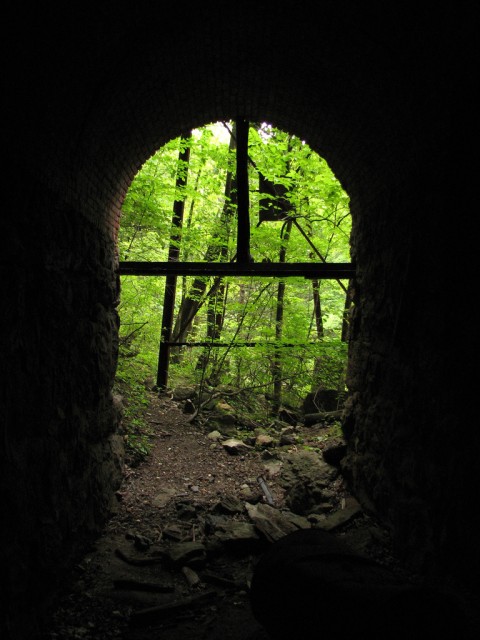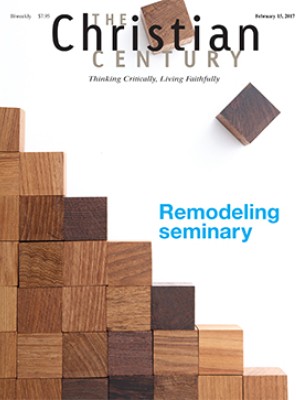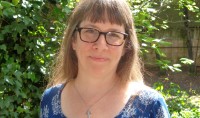I grew up in a neighborhood on the edge of town, built next to fields and woods. A few streets over, a friend’s house backed onto a soybean field, giving her backyard a feeling of endlessly stretching toward the horizon. My family’s backyard lay flush against our neighbor’s—but beyond the neighbor’s house lay what we all called “the woods.” The woods were the frontier of my childhood. They remain alive in my memory, their geography etched into my mind’s eye by years of exploration.
The woods began where our neighbor’s street dead-ended. My friends and I were often exploring the dense, pathless parts and passing silently over pine needle–carpeted paths that had been stamped into the ground by bicycle tires and feet. One trail took us to a bright, sandy path that wound in a circle around a tangle of trees; our bike tires would hiss as they hit it. We learned to avoid the sandy patches that would yank our bikes out from under us, to pick our way through briars, to navigate the ditches.
Read our latest issue or browse back issues.
The woods were full of mysteries and shivered with the sound of living things rustling just out of sight. Once I brought home some fuzzy, gray-green stalks, put them in a jar of water in my room, and woke the next morning to find caterpillars all over my bed. Just thinking of this brings back the startled sensation—the boundary between the realms of outside and inside had mysteriously dissolved overnight.
Thanks to Rob Cowen’s remarkable book Common Ground: Encounters with Nature at the Edges of Life, I’ve learned that there’s a word for my woods: edgelands. A British nature writer, Cowen celebrates not remote slices of paradise but the wild places accessible to all of us: the unregulated land at the edges of human habitation where nature has been left to its own devices. Or, as Cowen puts it, “the inglorious fallow patches you find at the fringes of the everyday.”
Cowen brings reverent attention to an edgeland near his home in the north of England. He writes about sleeping in it, pulling it as close to his body as he can. He documents its small beauties—a queen ant climbing up a faded dandelion leaf, her wings folded at her sides—and its monumental ones—the deer that leaps over him as he lies in a hollow beneath a tree.
Cowen’s loving descriptions of the lives he encounters in the edgeland spill over into imaginative stories about those lives. He imagines a deer waking up to the scent of dogs in the air and tasting the danger on its tongue. He captures the way being in a wild place gives a teenager access to the possibility of mystery. He conjures the final moments of a fox, trapped in barbed wire, its mind returning to its den before everything goes black.
Cowen’s literary approach to the edgeland grows out of a deep moral imagination and a desire to understand the lives being lived so near to him. He writes that even thinking about the edgeland changes him. He cultivates his solidarity with creatures that are losing their habitats and with species being driven out of existence by tracking the lives of plants and animals. His daily engagement with the edgeland also nurtures his resistance to government officials who have deliberately obscured the catastrophe of climate change for the sake of short-term financial gain. The edgelands don’t lie or spin; they declare what is happening in the world and give us a glimpse of both the past and the future.
As people of faith we can learn from these “inglorious patches” where new ecosystems take root and flourish. Cowen’s account of his sustained engagement with the Yorkshire edgelands sounds a lot like what sustained engagement with a church can offer: a sense of shared history with life in all its forms, an understanding of what it means to be human that is grounded in a web of connections with each other, the enlargement of our capacity to imagine and care about lives different from ours.
At the dead ends of the places where human beings build and dwell and work and consume, the natural world has risen up and reestablished itself in edgelands. They offer a close-up view of emerging ways of living. They show us how new relationships can take shape at unexpected intersections and move us to learn the practices that sustain these relationships. They open us to the hidden presence that permeates the world with a sense of something more near at hand—the “living power,” as Gandhi put it, “that holds all together, that creates, dissolves and recreates.” Hiding in plain sight, the edgelands are a living witness to the overlooked sacred in our midst. They challenge us to do the same in our communities.







